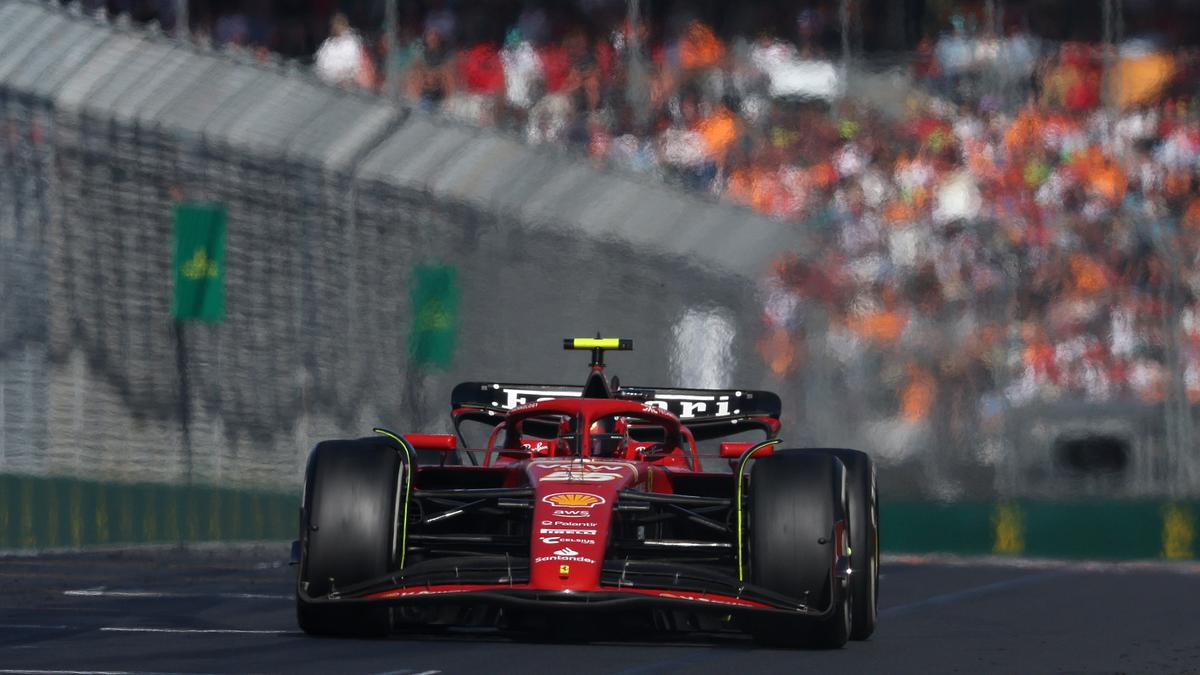Sainz sheds light on his journey from hospital to hero
Spaniard Carlos Sainz has shed light on how he went from hospital to hero, winning an Australian Grand Prix the Ferrari driver had feared he might miss after emergency appendix surgery two weeks earlier.
The 29-year-old won in Melbourne on Sunday after Red Bull’s triple world champion Max Verstappen suffered a first mechanical retirement in two years.
The victory meant Sainz, also a winner in Singapore last September, remains the only driver outside Red Bull to triumph since 2022 — some feat for a man still without a seat for 2025.
The Spaniard, who hands over to seven-times world champion Lewis Hamilton at the end of the year, missed the Saudi Grand Prix in Jeddah on March 9 after surgery a day earlier.
“As soon as I got my appendix removed, I went on the internet and started talking with professionals and said, ‘OK, what helps to speed up recovery?’,” he told reporters.
“I started doing all the sort of things that you can do to speed up recovery, the wounds, the scar tissue, what you can help to be faster on that, talking to other athletes, talking to other doctors in Spain, internationally.
“And then I put together a plan with my team. The reason why athletes recover faster is because you can dedicate 24 hours per day for seven days to recovery. And that’s exactly what I did.”
READ | Marquez blames Bagnaia mistake for costly collision at Portuguese GP
Sainz watched British teenager Oliver Bearman step into his car in Jeddah and drive it to seventh place on an extraordinary F1 debut, and then he got to work.
He had twice daily hour-long sessions in the hyperbaric chamber, breathing pure oxygen at higher pressure, and used an electromagnetic INDIBA machine for tissue repair.
Sainz programmed his time spent in bed, walking and eating “the kind of food that you have to recover.”
If he felt stiff and tired by the end of the race at Albert Park, the result exceeded all expectations.
“Nine days ago, when I was about to catch the flight to come to Australia, I was still in bed. I could barely use my abdominal (muscles) to move. And I was like, this is not going to happen,” he said.
“But I took the flight, and suddenly when I landed in Australia, the feeling was a lot better.
“And every 24 hours, I was making a lot more progress than the first seven days, which is actually what all the doctors and professional people told me. Don’t worry, because the second week, every day is going to improve a lot more than the first week.”
The Spaniard was the first driver since Austrian Gerhard Berger in 1997 to win his first race back from a medical absence.
McLaren’s Lando Norris, third on Sunday and Sainz’s former team mate, said it was typical of the man.
“I’m sure you have plenty of drivers who probably wouldn’t have tried as hard and dedicated so much of their time and effort to trying to recover and get back in the race car,” he added.


